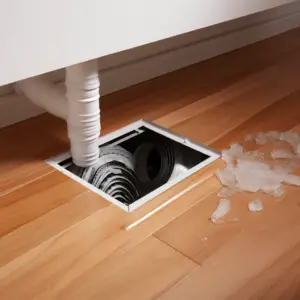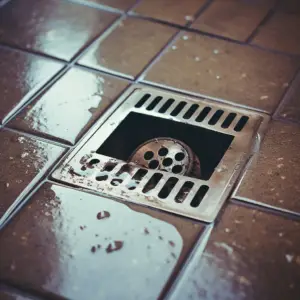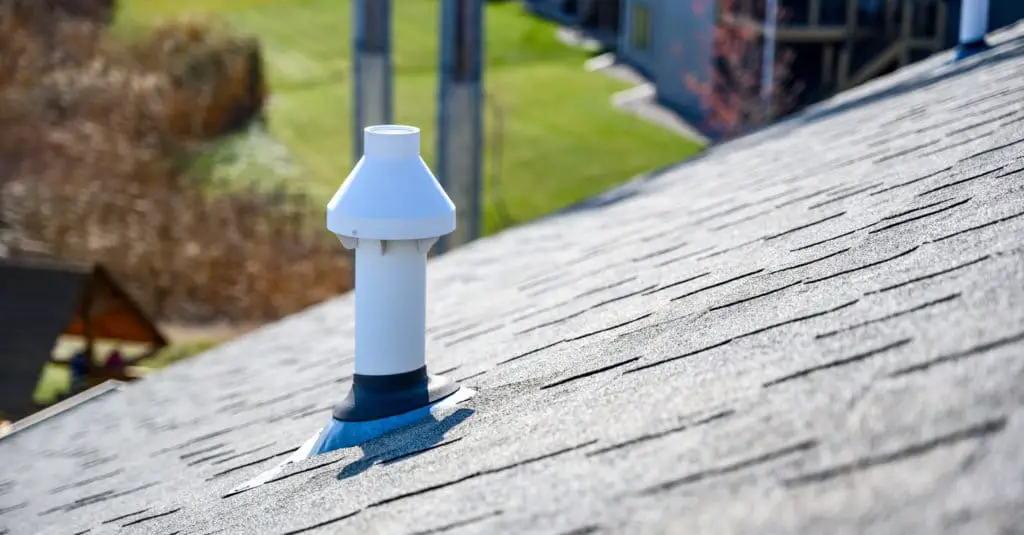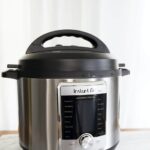Plumbing Vents, The vent pipes are components of a building’s drain-waste-vent system and don’t transmit water. All vent pipes emerge through the roof, and they serve to equalize the air pressure within the DWV system. They also release stale air into the outer air.
When there is a clog in a vent pipe, you usually address the issue from the roof. On the other hand, you can clear the clog out while working comfortably from your house’s interior; you don’t necessarily have to climb to the top of the rooftop.
Table of Contents
What Is The Purpose Of A Plumbing Vent?

Water can fill the pipes forming the sewage line system and produce a vacuum when it goes down your drains or toilets. The plumbing vent allows air from the roof to enter the pipe with the aid of atmospheric pressure.
The air pressure within the vent system then equalizes, preventing the formation of a vacuum. Water and trash will flow freely into the sewage line once more. A plumbing vent, often known as a “stack,” travels from your plumbing system to the rooftop through the attic.
It’s preferable for you to locate the plumbing vent on top of your house, as the elevated position allows harmful vapors to exit your property above the level of your nose. Are you experiencing plumbing issues as a result of a clogged vent? You’re definitely exposing yourself plus your loved ones to various dangers when the plumbing vent pipe is clogged.
Plumbing Vents have a gurgling sink or a lousy odor within your home, it’s probably due to a clogged vent pipe. Sewer pollutants can leak into your home and cause water-borne disease or even detrimental explosions if the issue is left unattended for some time.
Learn how to clean the clogged plumbing vent without going to the roof by following the guidelines below.
Unclog Plumbing Vent without Getting On the Roof: Step by Step Guide
Step #1
While standing slightly far from your house, look at the top from the ground level to find the vent pipe’s location and extent. The vent pipe’s top typically penetrates through the roof; thus, you can easily recognize the line of the plumbing vent.
Step #2
While now closer to the building’s wall at the same side as the vent pipe. Climb the attic and check how the vent pipe runs through it.
Step #3
At this stage the repairs will start. Using a hacksaw, keenly remove a portion of the vent pipe. Be meticulous to avoid creating other unwarranted and unnecessary cracks with the Drain-Waste-Vent system.
Step #4
From the point where you’ve created a small hole on the vent pipe, push the auger cable’s end into the pipe. The drill is also known as the plumbing snake because of its flexible wire that meanders through the pipework.
Turn the auger handle clockwise to extend the cable inside the vent pipe to reach and break up the blockage material. Once the clog is removed, turn the handle again in the anti-clockwise direction; it is the process of retracting the cable. If necessary, repeat the same procedure in the vent pipe, going downhill and upward as many times as you can.
Step #5
Measure the hole you had created within the open vent pipe and prepare all the materials you need to close it permanently. In addition, you need to measure the pipe’s diameter using the tape measure if you don’t know.
Step #6
To remove burrs from the pipe, you have to scrape the ends with a knife blade.
Step #7
Apply PVC adhesive to the vent pipe’s open ends and the ends of a PVC coupler. Make that the coupler is of the same diameter as the vent pipe. Make it also long enough to seal the gap.
Step #8
Place the coupler over the vent pipe hole and tighten it to prevent the aftermath of leakages.
How To Check If Your Plumbing Vent is clogged
Is there a blockage in your sink? Have you assessed the problem over and again but can’t find the exact one? It’s possible that the problem isn’t the drainage system; instead, it’s the drain-waste-vent. If the sink isn’t draining smoothly and the sewage connection isn’t clogged, it’s time to go upward instead.
The vent system, including the plumbing pipes that protrude from the roof, might be obstructed. When a vent pipe becomes blocked, it can cause a variety of problems within your house, ranging from “ghost flushing” to failure of the toilet to a sink failing to drain correctly.
Clogging inside the plumbing vent can be due to the following:
- Bird nests and carcasses
- Rodent carcasses
- Leaves
- Everyday trash
- Small branches or other debris
- Tennis balls
- Baseballs
The vent pipe and the drainage pipes function collectively. When the drainage pipes transport waste out of your house, the vent pipe provides the fresh air within the plumbing fixtures, allowing the system to repeat the cycle as it works harmoniously in transporting waste out of your home.
The air vents also allow wastewater gases and bad smells to escape to the environment.
Plumbing Vent is clogged

They form a significant asset to your house because of their dual role. Therefore, you need to act immediately to get things up and going again when they become clogged because of their vital functions.
You don’t want sewage gases to roll back into your house, nor do you want to discover that the plumbing system is malfunctioning.
Now that you know how plumbing vents function, think about what you’ll do if yours become clogged. The process of unclogging the vent pipe is quite complicated.
The best course is to take preventative measures before solving plumbing vent problems. Even yet, if a blockage exists, you have two alternatives: either unclog it yourself or opt to hire a professional.
If you’re to do it yourself without going to the roof, start by cleaning debris around the pipe. Shine an intense light through the vent pipe with a flashlight to see any obstruction you can reach. Run a plumber’s snake in the vent pipe if you can see it but can’t reach it.


